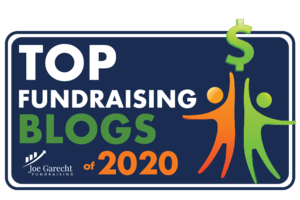As Thanksgiving approaches in the United States of America, I want to take a moment to express gratitude and to share with you some holiday insights.
Among the many things and people I am thankful for, I am grateful for you. I value the work you do to make the world a better place. I appreciate the time you invest to read and react to my posts. I thank you for the things you have taught me.
I hope that you and yours enjoy a meaningful Thanksgiving holiday. May you be happy. May you be healthy. May you be safe. May you live a life of ease.
Now, I want to take this opportunity to explode one of the most common myths involving Thanksgiving. Many people believe that the Pilgrims held the first Thanksgiving in 1621. Well, that’s not true. While the Pilgrims did hold a Thanksgiving in 1621, it was definitely not the first such celebration on what would eventually become US soil.
Berkeley Plantation on the James River in what is now Virginia claims to be the home of the first official Thanksgiving which was held in 1619. In 1963, President John F. Kennedy even recognized the Plantation’s claim.
However, there are several even older claims to the first Thanksgiving: In 1610, colonists in Jamestown, Virginia celebrated a Thanksgiving when a ship arrived full of food. In 1607, English colonists and Abnaki Indians observed a Thanksgiving at Maine’s Kennebec River. In 1598, San Elizario, a small community near present-day El Paso, Texas, held a Thanksgiving celebration. In 1565, the Spanish held a day of Thanksgiving in what is now Saint Augustine, Florida. In 1564, a Thanksgiving was held by French Huguenot colonists in present-day Jacksonville, Florida. In 1541, Francisco Vásquez de Coronado and his troops celebrated a Thanksgiving in what is now the Texas panhandle.
While various local communities have held different Thanksgiving celebrations at different times, the first national Thanksgiving in the US was celebrated on the last Thursday of November in 1789 as a result of a proclamation from the country’s first President, George Washington. Here is the text of Washington’s Thanksgiving Proclamation:
By the President of the United States of America, a Proclamation.
Whereas it is the duty of all Nations to acknowledge the providence of Almighty God, to obey his will, to be grateful for his benefits, and humbly to implore his protection and favor– and whereas both Houses of Congress have by their joint Committee requested me to recommend to the People of the United States a day of public thanksgiving and prayer to be observed by acknowledging with grateful hearts the many signal favors of Almighty God especially by affording them an opportunity peaceably to establish a form of government for their safety and happiness.
Now therefore I do recommend and assign Thursday the 26th day of November next to be devoted by the People of these States to the service of that great and glorious Being, who is the beneficent Author of all the good that was, that is, or that will be– That we may then all unite in rendering unto him our sincere and humble thanks–for his kind care and protection of the People of this Country previous to their becoming a Nation–for the signal and manifold mercies, and the favorable interpositions of his Providence which we experienced in the course and conclusion of the late war–for the great degree of tranquility, union, and plenty, which we have since enjoyed–for the peaceable and rational manner, in which we have been enabled to establish constitutions of government for our safety and happiness, and particularly the national One now lately instituted–for the civil and religious liberty with which we are blessed; and the means we have of acquiring and diffusing useful knowledge; and in general for all the great and various favors which he hath been pleased to confer upon us.
And also, that we may then unite in most humbly offering our prayers and supplications to the great Lord and Ruler of Nations and beseech him to pardon our national and other transgressions– to enable us all, whether in public or private stations, to perform our several and relative duties properly and punctually–to render our national government a blessing to all the people, by constantly being a Government of wise, just, and constitutional laws, discreetly and faithfully executed and obeyed–to protect and guide all Sovereigns and Nations (especially such as have shewn kindness unto us) and to bless them with good government, peace, and concord–To promote the knowledge and practice of true religion and virtue, and the encrease of science among them and us–and generally to grant unto all Mankind such a degree of temporal prosperity as he alone knows to be best.
Given under my hand at the City of New York the third day of October in the year of our Lord 1789.
— Go: Washington”
At the present time, we are experiencing great divisiveness in our society. This Thanksgiving, let’s take a moment to remember Washington’s words and the fact that we are all part of one great nation.














